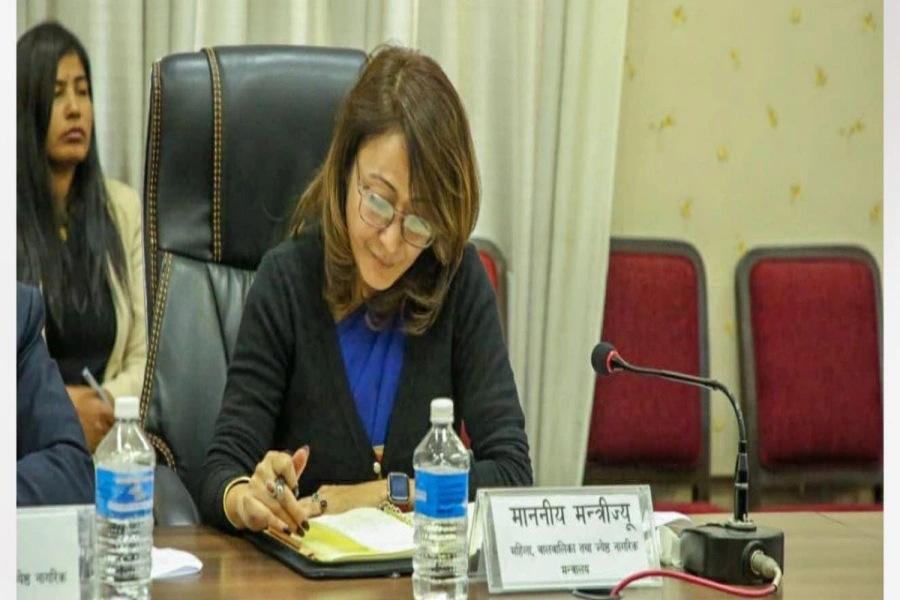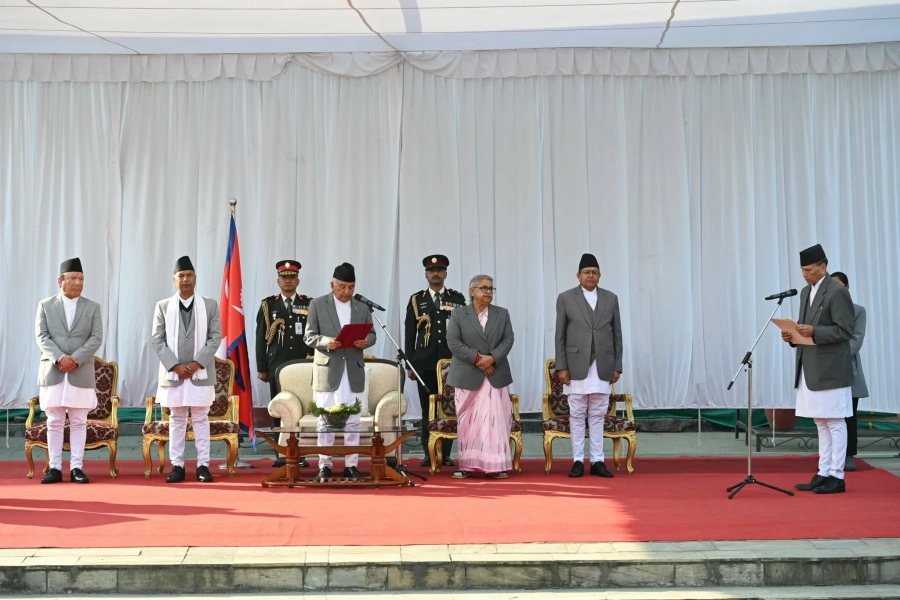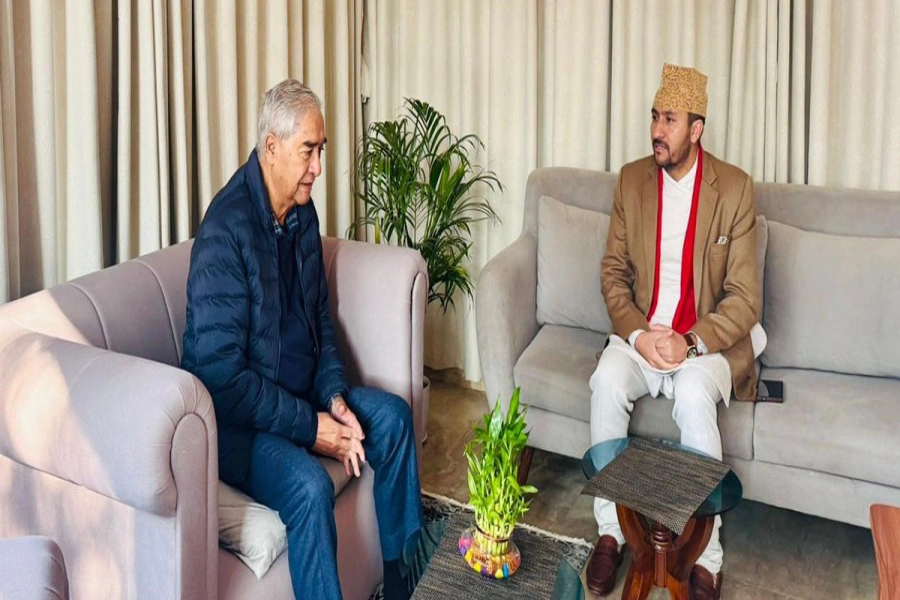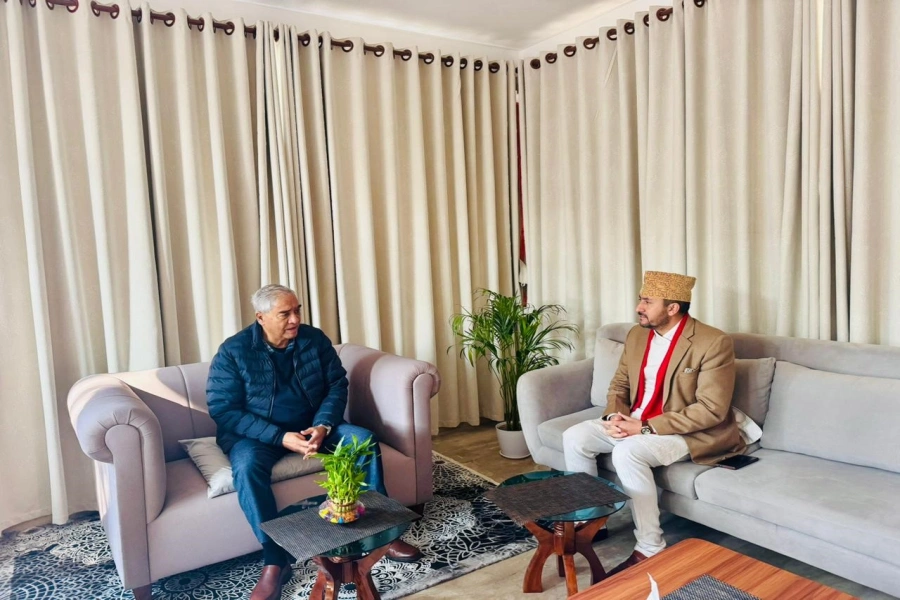The story is different in the case of Nepal where inflation hovers in the double-digit level, with 12 percent rate recorded for the year ended mid-April. This is surprising because the two economies are closely linked by more than trade relations, including the fixed exchange rate of currencies. Since there is no expectation of exchange rate changing in the foreseeable future, the prices of goods will equalize across the border, adjusted for customs duties and transport cost and, therefore, any noticeable change in the relative price levels will be erased quickly through the process called arbitrage.
Given the theory of one-price to prevail in countries linked by fixed exchange rate, the difference of price performance as is being observed between Nepal and India seems abnormal and unlikely to be long-lasting. Because India is a dominant economy and the main trading partner, inflation rate in Nepal will come down to the level of India which, in the current situation, means that prices here are going to fall or rise at a slower rate to be at par with prices in India.
DEMAND- VS COST-PUSH INFLATION
Although the price level in the two countries will equalize over the long-term, there is a good chance that higher inflation in Nepal may persist for a while. The reason is that current inflation in Nepal is not driven by demand-push factors—excess of demand over available supply of goods and services. Looking at the evidence—mainly the stance of fiscal and monetary policies—demand conditions in Nepal appear quite constrained. The government is taking in large amounts in tax revenue, while it has been unable to spend all that it had earmarked for development spending. This implies a noticeable improvement in budget balance, with Rs 13 billion in surplus expected for 2008/09, compared with Rs 5 billion deficit a year ago.
The tighter stance of fiscal policy has been strengthened by a supportive monetary policy reflected in the limited growth in bank liquidity, avoidance of downward adjustment in interest rate and smaller-size increase in bank credit. Available banking data through mid-April 2009 show there has been no change in the growth of private sector credit while net government credit has declined by a whooping 25 percent. Growth in narrowly defined money supply (currency and demand deposits) edged up higher but broad money growth decelerated quite a bit, compared to last year.
Given that current inflation in Nepal has not been due to excessive demand pressures, the impetus for it must have come from supply factors, either from a reduced supply level, a rise in the cost of production or a combination of both. Looking at the supply situation, there is no evidence of shortage in the market for consumer or investment goods, which could be expected in some extreme situations like natural disasters and trade blockade.
The last reason left to help explain high inflation in this country is the cost factor, which means that cost of doing business in Nepal must be increasing at a faster pace than is the case in India. In the absence of comparable cost data, it is difficult to establish conclusively that production cost in Nepal is rising faster than in India. However, we can see the evidence of this by studying the trends in factor and input prices and emergence of unfavorable business environment in Nepal.
Factor cost to businesses mainly comprises wage and interest payments, which are generally higher in this country than in India. Looking at the labor cost in particular, the supply of unskilled labor and trades people has steadily declined over the past some years reflecting migration, which put pressures on the wage rate. There is evidence that higher wage level in Nepal has attracted large number of workers from India, to work in farms and factories and perform low-skill service jobs. Additional pressures for cost build-up in Nepal come from the rising prices of industrial raw materials, construction items and energy products, a large component of which are imported from India. These prices, adjusted for taxes and transport cost, should be identical in two countries but, in most cases, there are substantial differences, with prices in Nepal exceeding normal mark-up price by a wide margin. The reasons for such differences are unclear but a few points can be noted.
First, uncertainties created by fears of frequent transport disruptions, market closures and labor unrest give leeway to traders to increase their price beyond reasonable mark-ups.
Second, industry and business sectors are much more affected by extortion threats and assessment of protection money than other sectors, which tend to raise the cost of doing business in this country.
Third, duties levied on imports from India are assessed selectively, enforcement is erratic and border-crossing carries high risks in terms of random delays at checkpoints and uncertain valuation of larger consignments.
Fourth, the relatively poor quality and high cost of public infrastructure and services—transport, electricity, water supply, public security, toll assessment, for example—raise business cost in Nepal by a substantial margin, compared to those faced by businesses in India.
Fifth and finally, because of the high import content of domestic production for both local use and imports, difficulty of getting industrial inputs to manufacturers in Nepal has a cost-cascading effect—local taxes added on to tax-inclusive inputs imported from India. For example, local garments using textile imported from India costs about 50 percent more than the same item manufactured in India.
COMPETITIVENESS & TRADE GAP
Purchasing Power Parity (PPP) theory in economics states that exchange rate between two currencies is determined by their relative purchasing power in terms of the amount of goods and services each can purchase in home country. For example, if Nepal and India produce only rice and price of rice per kilogram is NRs 100 in Nepal and IRs 50 in India, then the exchange rate will be NRs 2 to IRs 1, given that trade between two countries are open and tax-free.
If the rice price in Nepal increases above NRs 100 per kg, Nepali rice will lose market to Indian rice, in both home and Indian markets. Because of cheaper price in India, Nepal will face a rising level of trade deficit with India which will make Nepal lose foreign reserves to India or incur debt to finance the trade deficit. However, if Nepal does not want to loose reserve or incur debt, it will have only two options: Reduce the cost of rice production or devalue its currency.
The above scenario fits rather well to Nepal-India trade situation, which is characterized by high and rising level of deficit, which reached Rs 84 billion in 2008/09, compared to Rs 53 billion one year earlier. As a proportion to imports from India, export share declined from 37 percent to 27 percent during the three-year period to 2008/09. Reportedly, Nepal Rastra Bank sold US$1 billion to The Reserve Bank of India during the last year, in order to meet the shortage of Indian currency.
It is not advisable for Nepal to devalue its currency against the Indian rupee for solving its trade balance problem. Also, many knowledgeable people in the field would agree that a flexible exchange rate arrangement with India would be impractical and even dangerous because of the associated uncertainties and rise in speculative pressures. The only option for reducing our trade deficit with India then is to bring down our cost structure to a level that makes us more competitive. Although the return of peace, restoration of law and order and some measure of improvement in government efficiency would help us cut cost and improve competitiveness, a more durable solution of our trade problems lies in the restructuring of our production-mix that makes maximum use of comparative advantage that is based on our resource endowment. At this time, our comparative advantage lies principally in agriculture, tourism, and hydropower development.
(Writer is an economist.)
Effect of inflation in Kathmandu Valley: Prices of food and bev...




































